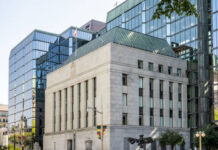Equities in Asia kicked off the week on a mixed note.
Nikkei (-0.63%) fell as the data showed the Japanese economy contracted 7.8% in the second quarter and 27.8% on annualized basis, the worst figures on record, as the pandemic took a heavy toll on consumption, capital expenditure and exports. The industrial production recovered 1.9% m-o-m in June, slower than 2.7% expected by analysts after last month’s 8.9% plunge.
The ASX 200 slid 0.69%.
But Chinese stocks edged higher as the People’s Bank of China (PBoC) injected 700-billion-yuan worth of medium-term lending facility (MLF) loans at 2.95% for the fourth month. The amount of new fund injection exceeded the total 550 billion yuan of past two months.
The excess Chinese liquidity whet investors’ appetite and somewhat relieved the negative pressure on US equity futures, pushing the Dow (+0.37%), S&P (+0.30%) and Nasdaq futures (+0.44%) higher after a mixed Friday close. But the stalemate fiscal talks in the US will likely weigh on the investor sentiment, as the next US fiscal boost will not see the daylight in the coming weeks, with the Senate adjourned until early September.
Meanwhile, talks between the US and Chinese officials over the phase-one trade deal that were supposed to take place last week were postponed. The delay in talks is worrying about the future of the trade deal, but soothing to some extent, provided that a delayed meeting is better than the worst-case scenario of a ruptured agreement. With Donald Trump increasing pressure on China as a part of his election campaign, there is little hope to get anything good out of the next round of talks anyway. So, no news is good news.
As a result, uncertainties regarding the US next fiscal aid package and deteriorating US-China relations are the major downside risks to the US equities and the short-term investor appetite.
FTSE futures (+0.07%) hint at a lackluster start in London.
The US 10-year yield is now above the 0.70% mark, the highest in two months, and the US dollar is mostly steady against its major peers. Investors watch how the market absorbs the US 3 and 6-month bill auction today, after the 30-year bond sale saw limited demand last week. Weak demand should encourage a further rise across the US yield curve.
Gold remained bid above the $1930 per oz, but investors remain in a wait-and-see mode following the severe downside correction that dragged the price of an ounce by up to $200 last week. The recovery in US yields should also limit the appetite in the yellow metal as investors now question whether there is potential for sustainable gains above the $2000 per oz. Given the mixed feelings, gold could not be a go-to hedge in case of renewed risk-off pressures across the global markets. The critical support to the medium-term positive trend stands at $1845 per oz. A move below this level should point at a bearish trend reversal and pave the way for a deeper downside correction towards the $1500 per oz.
With gold looking momentarily out of the race, the Swiss franc is where investors seek refuge. The USDCHF is under an increased downside pressure, but the Swiss National Bank (SNB) will likely step in to prevent the franc from strengthening further.
The direction in EURUSD and GBPUSD remains mostly determined by the US dollar appetite. But given the overstretched long positions in both the euro and the pound against the greenback, the risks remain tilted to the downside.
WTI crude is still at the make-or-break level near $43 per oz, its 200-day moving average. Bulls remain optimistic that, though revised to the downside, the recovery in global oil demand would continue giving support the market. Yet, a demand-focused advance is somewhat of a wishful thinking given the rising Covid cases and uncertainties regarding the pace of the global economic recovery. Hence, inability to break above the 200-day moving average could trigger a medium-term slide towards the $40 mark and below.
We have a light economic calendar at the start of the week. Investors will watch the Empire State Manufacturing index on Monday and the Reserve Bank of Australia’s (RBA) meeting minutes on Tuesday.











